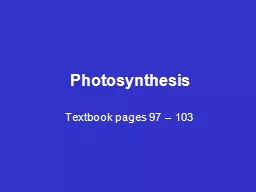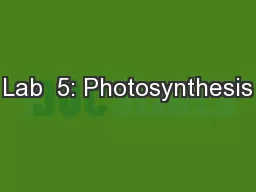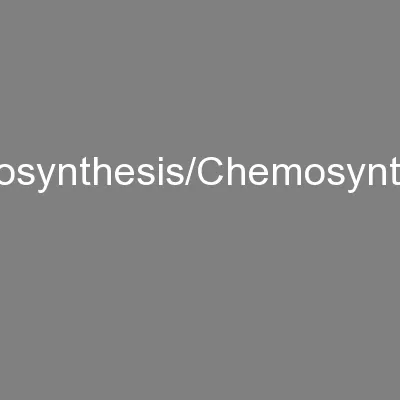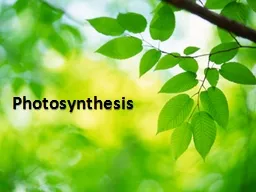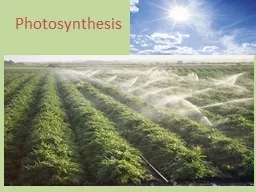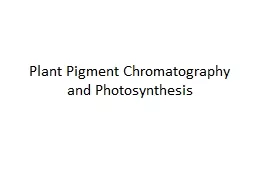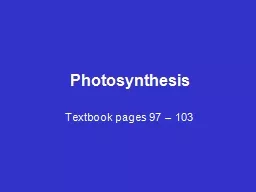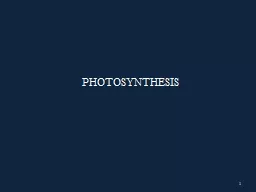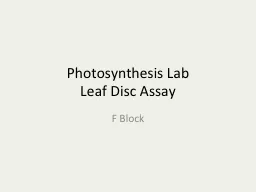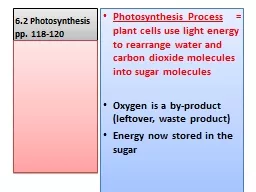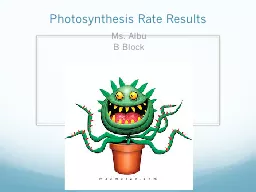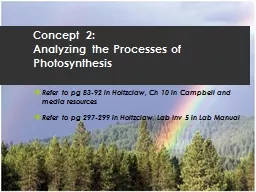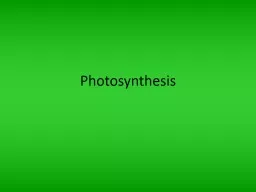PPT-Photosynthesis Textbook pages 97 – 103
Author : tatyana-admore | Published Date : 2018-03-16
Photosynthesis process used by plants using light energy to create sugar glucose C 6 H 12 O 6 from carbon dioxide CO 2 and water H 2 O oxygen gas O 2 is produced
Presentation Embed Code
Download Presentation
Download Presentation The PPT/PDF document "Photosynthesis Textbook pages 97 – 103" is the property of its rightful owner. Permission is granted to download and print the materials on this website for personal, non-commercial use only, and to display it on your personal computer provided you do not modify the materials and that you retain all copyright notices contained in the materials. By downloading content from our website, you accept the terms of this agreement.
Photosynthesis Textbook pages 97 – 103: Transcript
Download Rules Of Document
"Photosynthesis Textbook pages 97 – 103"The content belongs to its owner. You may download and print it for personal use, without modification, and keep all copyright notices. By downloading, you agree to these terms.
Related Documents

